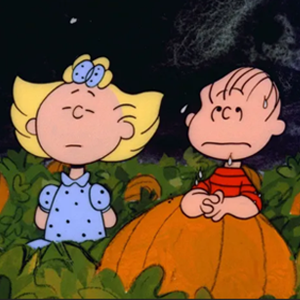Ed. Note: It’s the Great Pumpkin, Charlie Brown airs exclusively on AppleTV+, a free window from 10/21 thru 10/22 is being offered to non-subscribers.
As you prepare for your Halloween tradition of watching “It’s the Great Pumpkin, Charlie Brown,” let’s dive deeper into some trivia surrounding this timeless classic.
Mystery Candy Deliveries
After the first airing of the special in 1966, viewers, empathizing with Charlie Brown’s rock-filled Halloween haul, began sending candy to Charles Schulz’s studio.
Lucy’s Football Prank
In the special, Lucy teases Charlie Brown with her infamous football prank. Surprisingly, this was the very first time TV audiences witnessed this iconic trick. In the original comic strip, it was Violet, not Lucy, who pulled the prank back in 1951.
The ‘Sparky’ Connection
Charles M. Schulz, the creator of Peanuts, was affectionately known as “Sparky” for a significant part of his life. The nickname was bestowed by his uncle in reference to a horse named Spark Plug from the “Barney Google” comic strip.
Sponsors and the Coke “Bug
In the early days, production costs for Charlie Brown specials were sponsored by Coca-Cola and Dolly Madison snack cakes. The beginning and end of the broadcast featured these brands. The famous Coca-Cola “bug” adorned the specials for several years before eventually fading away.
CBS’s Salty Reaction
CBS, which had been home to Charlie Brown for decades, lost the rights to three holiday Peanuts specials in 2000. Despite being given the chance to make the first offer, ABC ultimately secured the rights. This move didn’t sit well with CBS executives, who felt they were losing a cherished tradition and loyalty over a few more dollars.
The Mystery of the Great Pumpkin
Schulz’s creation of the Great Pumpkin sparked curiosity among scholars. Many wondered if the legend was based on something real. Schulz received letters from academics inquiring about the origins of the Great Pumpkin story. He playfully suggested they consult Linus for the answers.
A Secret Santa Twist:
“It’s the Great Pumpkin, Charlie Brown” has a hidden connection to Santa Claus. Schulz originally conceived the Great Pumpkin saga as a metaphor for the hope and occasional disappointment associated with Saint Nick. He wanted to address the fact that not all families could afford abundant gifts during the holidays, and the Great Pumpkin served as a satirical take on Santa Claus. When Linus’s Great Pumpkin doesn’t appear, it mirrors the disappointment felt when Santa doesn’t deliver as expected.
Naked Composer’s Misadventure:
The jazzy scores in the early Peanuts specials were composed by Vince Guaraldi. While working on “The Great Pumpkin Waltz,” Guaraldi decided to take a quick shower. However, he emerged to strange noises outside. Investigating the commotion, he found himself locked out—completely naked. He attempted to climb a ladder to a second-floor window when the police spotted him. With humor, Guaraldi exclaimed, “Don’t shoot, I’m the Great Pumpkin.”
A Toothache Saved the Day:
The voice of Sally, Kathy Steinberg, was only four years old when she first portrayed the character in “A Charlie Brown Christmas.” However, there was a little hiccup. She had a loose tooth, and they feared it might affect her voiceover. Rushing to complete her lines, they succeeded just in the nick of time. The day after finishing, her tooth fell out, ensuring a lisp didn’t spoil her performance.
As you relish “It’s the Great Pumpkin, Charlie Brown” this Halloween, these trivia nuggets will deepen your appreciation of this beloved classic. Enjoy the magic and nostalgia of this special tradition! 🎃🍬






